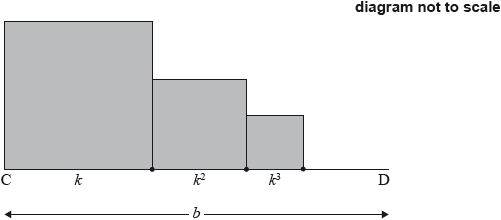| Date | May 2022 | Marks available | 3 | Reference code | 22M.2.SL.TZ2.3 |
| Level | Standard Level | Paper | Paper 2 | Time zone | Time zone 2 |
| Command term | Find | Question number | 3 | Adapted from | N/A |
Question
Gemma and Kaia started working for different companies on January 1st 2011.
Gemma’s starting annual salary was , and her annual salary increases on January 1st each year after 2011.
Kaia’s annual salary is based on a yearly performance review. Her salary for the years 2011, 2013, 2014, 2018, and 2022 is shown in the following table.
Find Gemma’s annual salary for the year 2021, to the nearest dollar.
Assuming Kaia’s annual salary can be approximately modelled by the equation , show that Kaia had a higher salary than Gemma in the year 2021, according to the model.
Markscheme
METHOD 1
using geometric sequence with (M1)
correct expression or listing terms correctly (A1)
OR OR listing terms
Gemma’s salary is (must be to the nearest dollar) A1
METHOD 2
(M1)(A1)
Gemma’s salary is (must be to the nearest dollar) A1
[3 marks]
finds and (accept ) (A1)(A1)
Note: Award (A1)(A1) for , or , or
Kaia’s salary in 2021 is (accept from ) A1
Kaia had a higher salary than Gemma in 2021 AG
[3 marks]
Examiners report
Many errors were seen in part (a). Some candidates used the incorrect formula or used an incorrect value for the exponent e.g. 9 was often seen. Others lost the final mark for not answering to the nearest dollar.
Very few tried to make a table of values.
In part (b) students often let represent the number of years since a given year, rather than the year itself. Despite this, most were able to find the correct amount with their equation and were awarded marks as appropriate. Some students did not realise regression on GDC was expected and tried to work with a few given data points, others had difficulty dealing with the constant in the regression equation if it was reported using scientific notation.


